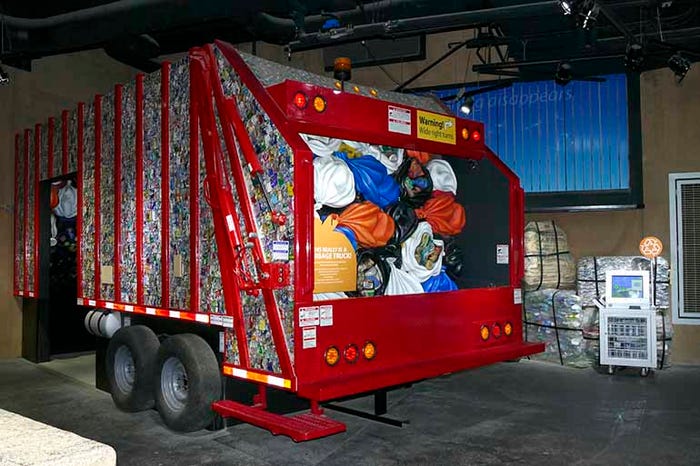Check out the eco-friendly elements involved with the design of Springs Preserve's NV Energy Foundation Sustainability Gallery.

For those of us who will be in Vegas in the (very) near future, Las Vegas-based Springs Preserve is housing its NV Energy Foundation Sustainability Gallery, where attendees can learn about living a more eco-friendly lifestyle through interactive exhibits, children's play areas and an entire house full of sustainable appliances, fixtures and décor.
Attendees can explore a simulated Las Vegas neighborhood, making their way through areas focused on recycling, composting, alternative energy, sustainable construction and water conservation. Along the way, "Smart Shopper" kiosks will help them learn more about making informed choices for a greener home and planet.
Interactive exhibits include a Garbage Truck Theater and a Sustainable House exhibit, where visitors can discover how to save both money and the environment in their own homes.
“The idea of the Sustainability Gallery is to focus on a variety of different sustainable actions and products that interact with our daily lives,” noted Spring Preserve on its website. “Everywhere attendees turn, they’re encouraged to pitch in as a creative and informed problem solver.”
The gallery also shows visitors how the small changes they make in their own homes can save resources and money. The Sustainable Home, which is built to look like an average house, is a key exhibit in this gallery. It is housed in the Springs Preserve’s Desert Living Center (DLC) and educates attendees how to choose and use sustainable materials, including building materials, accessories and furnishings. Plus, the house uses resources efficiently, particularly water and energy.
In addition, the exhibits discuss methods such as reusing or retrofitting existing houses. Text panels explain the benefits of green materials, like cork and bamboo flooring, rammed-earth and straw-bale construction, materials for countertops and cabinetry, energy- and water-efficient appliances, hemp upholstery and dishes made from recycled glass.
The DLC explores sustainable solutions to environmental challenges and has five buildings featuring 43 exhibits, classroom and meeting spaces and gardens. The U.S. Green Building Council has given the DLC Platinum certification, which is the highest Leadership in Energy and Environmental Design level.
According to the organization, buildings at the preserve are positioned to utilize natural lighting, collect solar power to heat floors and water radiantly, and contain only low energy north- and south-facing windows. Structures have been designed to take advantage of natural ventilation, and several make use of entryway, overhangs and patio microclimates. Butterfly roofs on a few of the buildings help collect stormwater for reuse.
Reclaimed timber, salvaged wood from the Lucin Cutoff Trestle Bridge, over which trains crossed the Great Salt Lake until the 1950s, and glulam beams are used as primary supporting structural elements throughout the DLC. Modular carpet tile made from recycled plastic bottles and corn husks, furnishings made of recycled sunflower seed husks and countertops made from recycled paper are just a few of the recycled products utilized at the preserve. Reclaimed steel and glass also have been used extensively throughout the project.
Two buildings of the DLC totaling more than 41,000 square feet make the preserve one of the largest commercial straw bale construction projects in the U.S., according to the organization. Water used onsite is filtered and reused to irrigate plants and flush toilets. Photovoltaic arrays provide a canopy of shade for visitor parking and generate 17 percent (or approximately one-fifth) the electricity needed to power the preserve, and evaporative cooling towers naturally funnel cool air into the DLC.
Flip through these images to check out Springs Preserve’s NV Energy Foundation Sustainability Gallery.
About the Author(s)
You May Also Like


